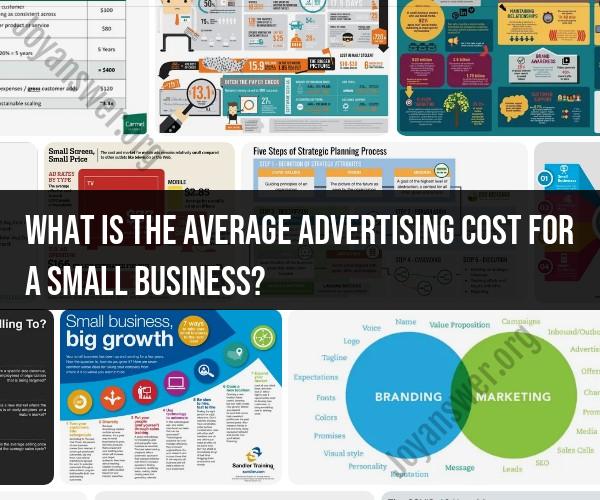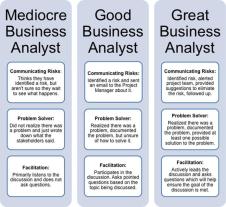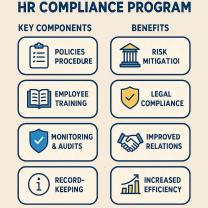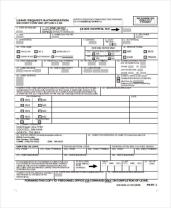What is the average advertising cost for a small business?
The average advertising cost for a small business can vary widely depending on several factors, including the industry, location, advertising goals, and the specific advertising channels or strategies employed. Here are some general insights into the average advertising costs for small businesses across different channels:
Digital Advertising:
- Google Ads (Pay-Per-Click): On average, small businesses can expect to pay anywhere from a few hundred dollars to several thousand dollars per month for Google Ads. Costs depend on the competitiveness of keywords and your budget.
- Social Media Advertising: The cost of social media advertising, such as Facebook Ads or Instagram Ads, varies based on your targeting options and ad objectives. Small businesses often spend anywhere from $200 to $2,500 or more per month.
Email Marketing:
- Email marketing costs can vary widely. Small businesses may spend as little as $20 to $50 per month for basic email marketing tools. More comprehensive email marketing platforms may cost several hundred dollars per month, depending on the size of your email list and features required.
Content Marketing:
- Costs for content marketing depend on whether you create content in-house or hire freelancers or agencies. Creating high-quality blog posts, videos, or infographics can range from a few hundred to a few thousand dollars per piece.
Print Advertising:
- Traditional print advertising, such as newspaper or magazine ads, varies significantly based on factors like ad size, publication circulation, and ad placement. Smaller local publications may offer more affordable options, while national magazines can be more expensive. Costs can range from a few hundred to thousands of dollars per ad.
Direct Mail:
- Direct mail campaigns involve costs for design, printing, postage, and mailing lists. Small businesses may spend several hundred to a few thousand dollars on a direct mail campaign, depending on the scope and scale.
Outdoor Advertising:
- Costs for outdoor advertising, such as billboards or transit ads, vary by location and visibility. Smaller markets may offer more affordable options, while prime city locations can be costly. Monthly costs can range from a few hundred to several thousand dollars.
Event Sponsorships and Trade Shows:
- Participating in events, sponsorships, or trade shows can range from a few hundred dollars for local events to several thousand dollars for larger industry conferences.
Search Engine Optimization (SEO):
- Costs for SEO services can vary widely based on the scope of work and competition in your industry. Small businesses may spend anywhere from a few hundred to several thousand dollars per month for ongoing SEO services.
It's important to note that there is no one-size-fits-all answer for small business advertising costs. Your budget should be based on your specific marketing goals, target audience, and the channels that are most effective for your business. It's also essential to regularly evaluate the return on investment (ROI) of your advertising efforts to ensure that your budget is being used effectively. Small businesses often benefit from starting with a modest budget and gradually increasing it as they see positive results.
Budgeting for Advertising: What's the Average Advertising Cost for Small Businesses?
The average advertising cost for small businesses varies depending on the industry, the size of the business, and the marketing goals. However, a good rule of thumb is to spend between 7% and 10% of your gross revenue on marketing.
According to a recent survey by the Small Business Administration, the average small business spends $10,000 per year on advertising. However, some industries, such as technology and healthcare, tend to spend more on advertising.
Calculating Your Marketing Expenses: Understanding Small Business Advertising Costs
When calculating your marketing expenses, it's important to factor in all of the costs associated with your advertising campaign, including:
- Media costs: This includes the cost of advertising space or time on various media channels, such as online advertising, social media marketing, print advertising, and radio and television advertising.
- Production costs: This includes the cost of creating your ad copy, designing your ads, and producing any videos or other creative content.
- Management costs: This includes the cost of managing your advertising campaign, such as tracking your results and making adjustments as needed.
Advertising Investments: How Much Should a Small Business Spend on Promotion?
The amount that a small business should spend on advertising depends on a number of factors, including:
- Industry: Some industries, such as technology and healthcare, tend to spend more on advertising than others.
- Business size: Larger businesses typically have larger marketing budgets than smaller businesses.
- Marketing goals: The amount that you should spend on advertising will depend on your specific marketing goals, such as increasing brand awareness, driving traffic to your website, or generating leads and sales.
If you're not sure how much to spend on advertising, it's a good idea to start with a small budget and increase it as you see results. You can also use tools like Google Analytics to track your website traffic and conversions so that you can see what's working and what's not.
Here are some tips for budgeting for advertising:
- Set clear goals. What do you want to achieve with your advertising campaign? Once you know your goals, you can develop a budget that will help you to achieve them.
- Do your research. Understand the different advertising channels available and their costs. This will help you to create a budget that is realistic and effective.
- Be flexible. The advertising landscape is constantly changing, so it's important to be flexible with your budget. Be willing to adjust your budget as needed to ensure that you are getting the most out of your investment.
By following these tips, you can create an advertising budget that will help you to achieve your marketing goals.













